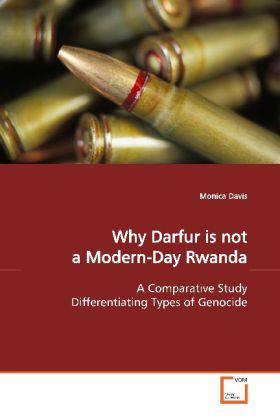
Je cadeautjes zeker op tijd in huis hebben voor de feestdagen? Kom langs in onze winkels en vind het perfecte geschenk!
- Afhalen na 1 uur in een winkel met voorraad
- Gratis thuislevering in België vanaf € 30
- Ruim aanbod met 7 miljoen producten
Je cadeautjes zeker op tijd in huis hebben voor de feestdagen? Kom langs in onze winkels en vind het perfecte geschenk!
- Afhalen na 1 uur in een winkel met voorraad
- Gratis thuislevering in België vanaf € 30
- Ruim aanbod met 7 miljoen producten
Zoeken
Why Darfur is not a Modern-Day Rwanda
A Comparative Study Differentiating Types of Genocide
Monica Davis
Paperback | Engels
€ 48,45
+ 96 punten
Omschrijving
In the media, the current humanitarian crisis in Darfur, Sudan, is constantly being compared to the Rwandan genocide in 1994. A crucial question to ask, therefore, is whether this is a fair and fitting assessment of the current conflict or whether this is a sloppy means to rally support for an appropriate intervention in the region (which is indisputably needed). This book focuses on two research questions. First, it compares the two conflicts and extracts the main differences, and then it uncovers the social, economic, historical and political causes for these differences. Secondly, it considers the existing typologies of genocide and uses these differences to create a new typology of genocide. Although this research aims at pointing out the differences between the conflicts in Rwanda and in Darfur, its intention is not to discourage or to dishearten those who are pushing for an effective intervention in Darfur. On the contrary, any intervention should be grounded on the right reasons, and not because this conflict has been coined the modern-day Rwanda.
Specificaties
Betrokkenen
- Auteur(s):
- Uitgeverij:
Inhoud
- Aantal bladzijden:
- 84
- Taal:
- Engels
Eigenschappen
- Productcode (EAN):
- 9783639057379
- Uitvoering:
- Paperback
- Afmetingen:
- 220

Alleen bij Standaard Boekhandel
+ 96 punten op je klantenkaart van Standaard Boekhandel
Beoordelingen
We publiceren alleen reviews die voldoen aan de voorwaarden voor reviews. Bekijk onze voorwaarden voor reviews.









